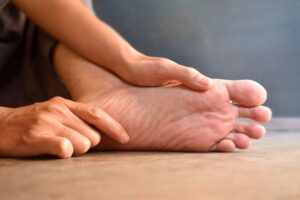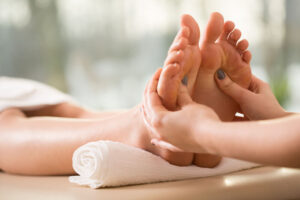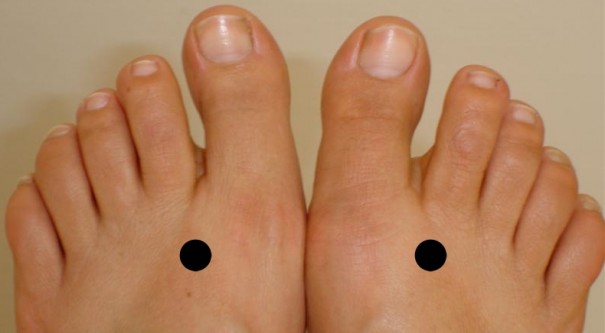Reflexology, with its roots buried deep in traditional medicine, operates on the principle that specific points on the feet, hands, and ears correspond to different body organs and systems. By stimulating these points, reflexology aims to promote balance, enhance well-being, and potentially, offer a supportive role in diabetes management. This exploration delves into the essence of reflexology for diabetes as a supplementary approach, unearthing its potential benefits, understanding its limitations, and providing insights into how it can be integrated into a comprehensive diabetes management plan.
Contents
Can Reflexology Help With Type 2 Diabetes?
 Reflexology, a complementary therapy rooted in ancient traditions, is increasingly explored for its potential benefits in managing various health conditions, including type 2 diabetes. The principle behind reflexology is that stimulating specific points on the feet, hands, and ears can influence corresponding organs and bodily systems, potentially promoting better health and balance.
Reflexology, a complementary therapy rooted in ancient traditions, is increasingly explored for its potential benefits in managing various health conditions, including type 2 diabetes. The principle behind reflexology is that stimulating specific points on the feet, hands, and ears can influence corresponding organs and bodily systems, potentially promoting better health and balance.
While reflexology does not claim to cure diabetes, it is believed to support overall well-being by reducing stress, enhancing circulation, and fostering relaxation. These effects, in turn, could play a supportive role in the holistic management of type 2 diabetes, particularly by addressing stress and circulation issues. These are significant concerns for individuals managing this condition.
The effectiveness of reflexology in directly influencing blood sugar levels in people with type 2 diabetes is still a subject of ongoing research. Hence, it’s essential for individuals considering reflexology for diabetes management to do so as part of a comprehensive care plan.
What Is The Reflex Point For Diabetes?
In reflexology, the practice involves applying pressure to specific points on the feet, hands, and sometimes ears, based on the belief that these points correspond to different organs and bodily systems. For managing diabetes, reflexologists often focus on points that are believed to correspond to the pancreas, as well as other areas related to the endocrine system which plays a crucial role in insulin production and glucose metabolism.
The reflex points for the pancreas are typically found in the following locations:
- On the feet: The pancreas point is usually located on the left foot, in the center of the foot’s arch. For overall endocrine support, including the pancreas, additional points along the arch of the foot towards the heel may be targeted.
- On the hands: Similar to the feet, the reflex point for the pancreas can be found on the palm, mirroring the position of the foot, along the area that corresponds to the arch of the foot.
It’s important to note that reflexology is not a substitute for conventional diabetes treatment but rather a complementary approach. The practice aims to support overall well-being and can be particularly helpful in managing stress and promoting relaxation.
What Kind Of Massage Is Good For Diabetics?
 For individuals with diabetes, massage therapy can offer significant benefits, particularly in terms of reducing stress, improving circulation, and alleviating muscle tension. However, it’s crucial to choose the right type of massage and to communicate effectively with your massage therapist about your condition. Here are some types of massage that are often considered beneficial for diabetes:
For individuals with diabetes, massage therapy can offer significant benefits, particularly in terms of reducing stress, improving circulation, and alleviating muscle tension. However, it’s crucial to choose the right type of massage and to communicate effectively with your massage therapist about your condition. Here are some types of massage that are often considered beneficial for diabetes:
Swedish Massage
Known for its gentle, relaxing strokes, Swedish massage is ideal for improving circulation and reducing stress. This type of massage can help manage the stress hormone levels in the body. This is particularly beneficial for people with diabetes, as stress can affect blood sugar levels.
Deep Tissue Massage
While more intense, deep-tissue massage can be beneficial for individuals with diabetes who experience muscle stiffness and pain. It targets the deeper layers of muscle and connective tissue. And, helping to relieve chronic patterns of tension. However, it’s essential to ensure that the massage therapist is aware of your condition, as too much pressure might not be suitable for everyone, especially for those with complications like neuropathy.
Reflexology
Though not a traditional massage, reflexology involves applying pressure to specific points on the feet, hands, and ears that correspond to different body organs and systems. For people with diabetes, focusing on points associated with the pancreas and endocrine system may help in promoting relaxation and stress relief.
Myofascial Release
This technique involves gentle, sustained pressure into the Myofascial connective tissue restrictions. It can help reduce pain and increase motion by relaxing the muscles and improving blood flow. This is beneficial for diabetic individuals experiencing muscle tightness or “trigger points.”
Lymphatic Drainage Massage
For individuals with diabetes who are prone to swelling or edema, especially in the legs and feet, lymphatic drainage massage can be particularly beneficial. This gentle massage technique helps stimulate the lymphatic system, promoting the removal of excess fluids and toxins from the body.
Incorporating massage therapy into a comprehensive diabetes management plan can enhance overall well-being. Hence, helps manage some of the condition’s physical and psychological stresses.
What Are The Benefits of Reflexology for Diabetics?
Reflexology, a complementary therapy involving the application of pressure to specific points can offer several benefits for individuals with diabetes. Here are some potential benefits of reflexology for diabetes:
- Stress Reduction: Reflexology can induce deep relaxation, helping to lower stress levels. Reduced stress can improve the body’s ability to manage blood sugar more effectively.
- Improved Circulation: Poor circulation is a common issue for individuals with diabetes, leading to complications such as neuropathy or foot ulcers. This can help improve blood flow throughout the body, enhancing tissue oxygenation and potentially reducing the risk of complications.
- Pain Relief: Diabetic neuropathy can cause significant pain and discomfort. This therapy may help alleviate pain by stimulating nerves in the feet and hands. It can have a calming effect on the body’s pain response system.
- Enhanced Well-being: Living with diabetes can be challenging, often affecting a person’s mental health. The relaxing nature of reflexology can boost mood and provide a sense of well-being, which is crucial for overall health management.
- Better Sleep: Many individuals with diabetes suffer from sleep problems. By promoting relaxation and reducing stress, reflexology can improve sleep quality. This is vital for good health and effective diabetes management.
- Support for Digestive Health: Reflexology points related to the digestive system may help improve digestion and alleviate some gastrointestinal symptoms. Proper digestive function is important for nutrient absorption and blood sugar regulation.
- Detoxification: While evidence is limited, some practitioners believe that reflexology can help stimulate the lymphatic system, aiding in the elimination of toxins from the body. A well-functioning lymphatic system is crucial for maintaining a healthy immune response and reducing inflammation.
It’s important for diabetics considering reflexology to consult with their healthcare provider. They will help to ensure it’s safe for their specific condition.
What Are Some Considerations In Reflexology For Diabetes?
 When considering reflexology as a complementary therapy for diabetes, several important considerations should be taken into account to ensure safety and effectiveness. Here are some key points to keep in mind:
When considering reflexology as a complementary therapy for diabetes, several important considerations should be taken into account to ensure safety and effectiveness. Here are some key points to keep in mind:
Choosing a Qualified Reflexologist
It is important to select a reflexologist who is professionally trained and experienced, ideally with knowledge about diabetes and its complications. A qualified practitioner will understand the specific needs and potential risks of diabetic patients and will know how to tailor the therapy accordingly.
Monitoring Blood Sugar Levels
Reflexology can influence the body’s stress levels and circulation, which may indirectly affect blood sugar levels. Individuals with diabetes should monitor their blood sugar levels more closely when starting reflexology to observe any changes. And adjust their diabetes management plan as necessary.
Awareness of Foot Conditions
Diabetes can lead to foot-related complications, such as reduced sensation (neuropathy), changes in skin integrity, and increased risk of infection. Reflexologists should be informed about any foot conditions to avoid injury and infection. In some cases, a modified approach may be necessary to ensure safety.
Understanding Individual Responses
People with diabetes may respond differently to reflexology. Some may find it deeply relaxing and beneficial, while others might not experience the same level of benefit. It’s important to communicate openly with the reflexologist about the effects of the treatment and adjust the approach as needed.
Setting Realistic Expectations
While reflexology can offer several benefits, including stress reduction and improved circulation, it is not a cure for diabetes. Expectations should be realistic, with the understanding that reflexology is a supportive therapy that can enhance overall well-being and quality of life.
By considering these factors, individuals with diabetes can safely explore reflexology as a complementary therapy, potentially gaining benefits that support their overall health and well-being.
Conclusion
In conclusion, reflexology for diabetes offers a unique complementary approach to the management, focusing on stress reduction, improved circulation, and overall well-being. While it should not replace conventional diabetes treatments, it can serve as a supportive therapy to enhance the quality of life. Individuals need to consult with their healthcare provider before starting reflexology, especially if they have complications related to diabetes.
By incorporating reflexology alongside traditional medical care, individuals may find a holistic way to manage their condition. Potentially easing some of the burdens diabetes can bring to daily life. Do you want to get rid of diabetes? Join our online diabetes treatment program and reverse Diabetes naturally through lifestyle changes such as a Personalized Diet plan, Exercise, Yoga, dieticians, and health coaches.

